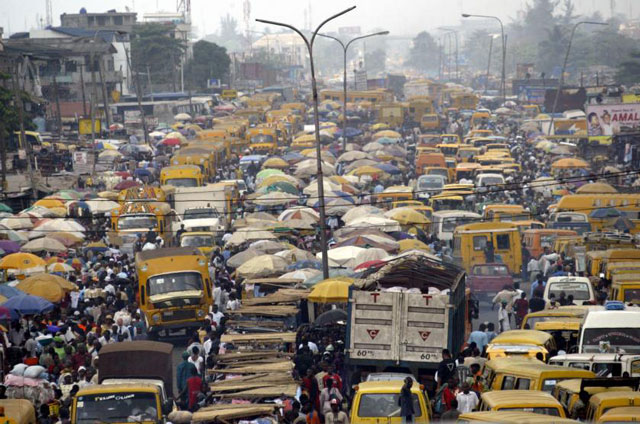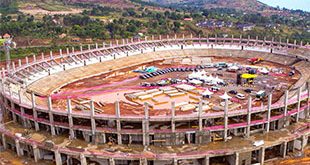
Lagos, Nigeria | AFP | It’s only when the thick smog of humidity and pollution lifts that the size of Lagos becomes clear: from above, the megacity of some 20 million people seems to stretch out to infinity.
Not even the Atlantic Ocean appears to be able to stop its exponential growth, a tide of multi-storey apartments and shacks stretching into the sea.
The state of Lagos was created just 50 years ago, on May 27, 1967. At that time, the quiet city on the edge of a large green lagoon was Nigeria’s capital and home to about one million people.
But Nigeria’s population then exploded. The biggest boom happened in Lagos, seen as a place of possibilities where people came from all over the country and west Africa to make their fortune.
Fifty years on, Lagos is the world’s 10th largest city with between 17 and 22 million people, although no-one seems to be counting.
With an average of 900 new arrivals a day during the last half-century, the provision of housing, transport, water and electricity has been stretched beyond breaking point.
Yet Lagos drives Nigeria’s economy, and with the country set to become the world’s third largest by 2050, it is destined to drive African growth.
– Mission impossible –
“All African cities are facing the same problems: rapid urbanisation, land management, pollution,” said Guillaume Josse, from French research firm Groupe Huit.
“But Lagos is a caricature. Its challenges are so huge that they seem insurmountable,” added Josse, who specialises in developing cities.
Ayo Assaf, however, has decided to try the impossible and rethink the historic heart of Lagos.
For nearly seven years, the urban planner who earned his stripes in New York has surveyed the streets of Lagos Island at the request of the state government.
The population density on Lagos Island is up to 1,200 people per hectare (2.47 acres) — more than 20 times the density in London.
Wearing jeans and a white collared shirt, Assaf calmly picks his way through the crowded alleyways of the former business district, now converted into a giant market.
No space is wasted: a jewellery vendor uses the railings outside a mosque as a display stand for her necklaces; an old library has been transformed into a wedding dress shop.
The pavements are overrun with photocopiers and mechanics, or converted into kitchens selling take-away Nigerian food.
“There is such energy, the trading generates millions of naira. You cannot wipe this out, you have to use what’s there and enhance it due to safety and hygiene concerns,” said Assaf.
Assaf dreams of a more sophisticated Lagos, where better infrastructure makes it easier to do business, and more people have access to housing and basic services.
“There, I imagine a large street with small shops, it will be our Champs Elysees,” he says with a grin.
Assaf also wants to introduce a public transportation hub, as there is no bus station on Lagos Island.
Instead, hundreds of danfos — the city’s battered yellow minibuses — clog the streets, spilling out their passengers in the middle of the road in a constant stream.
Assaf delivered his report to then-Lagos governor Babatunde Fashola in 2015.
But since then the administration has changed and few of his ideas have been implemented.
 The Independent Uganda: You get the Truth we Pay the Price
The Independent Uganda: You get the Truth we Pay the Price



